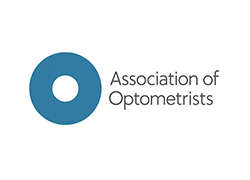
Single Vision
These are corrective lenses with the same prescription over the entire surface and are available in an extensive range of powers and materials. They are generally used for a single task such as reading, computer or distance viewing.
Bifocals
Traditional bifocals are designed to provide distance and near vision in a single lens. The near vision correction is contained in a segment on the lower part of the lens which is often visible on the front. This segment provides the extra power necessary for you to read clearly. Bifocals can be made with other combinations such as computer distance on top and reading on the bottom.
Reading segments are available in various shapes and sizes dependant on your requirements. Our optician will discuss this with you and can demonstrate their appearance and how they work.
Dependent on age a traditional bifocal can often leave mid-distance vision uncorrected. As the segment is often visible some customers feel bifocals are not as cosmetically appealing as progressive lenses.
Progressives (often referred to as varifocals or multifocals)
These are lenses which have been designed to give natural vision at all distances. They work because the lens power changes gradually across the surface. Generally they are fitted with the distance focus directly in front of the pupil. As you look down the power of the lens changes progressively so that you can see objects at mid-distance and close up.
However even varifocals cannot offer 100% clear vision. There will always be areas on the lens where the vision will appear to be soft or a little distorted. The lenses you choose however can determine the amount of soft-focus you experience. A tailor made (or customised) lens should enable you to minimise this. A little adaptation may be required with a varifocal lens before the wearer becomes completely comfortable with this form of correction. With patience however the great majority will succeed.
Unlike bifocals, varifocals have no obvious dividing lines on the lens which some people find distracting. For that reason they are also regarded as being more cosmetically appealing. Due to modern technological advances these lenses can be put into virtually any frame size or shape. Your optician will discuss with you your lifestyle requirements, occupation and hobbies to determine which lens design is most suited to you.
Occupational lenses
These are lenses (usually bifocal or progressive) that have been adapted to suit the needs of individuals who (owing to their occupations) have quite specific visual requirements. For those who spend a lot of time viewing a computer and reading, a variation of intermediate and near vision can be incorporated into a lens solely for these purposes.








